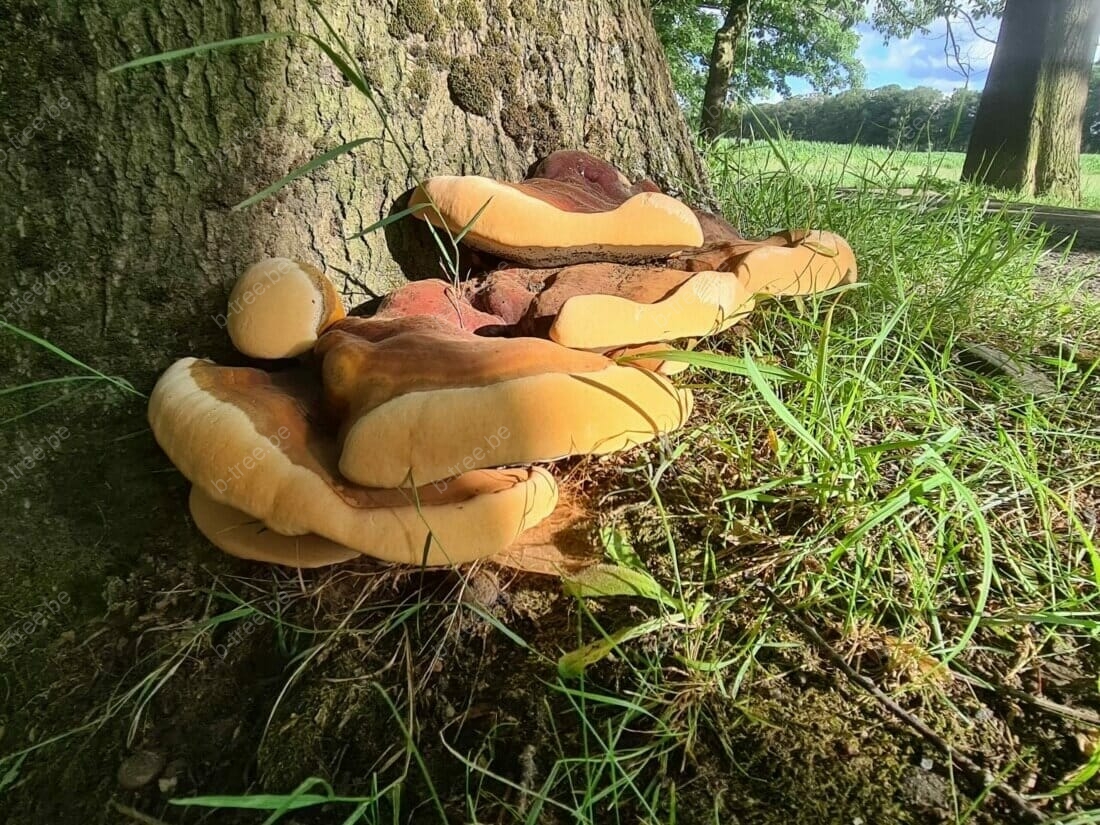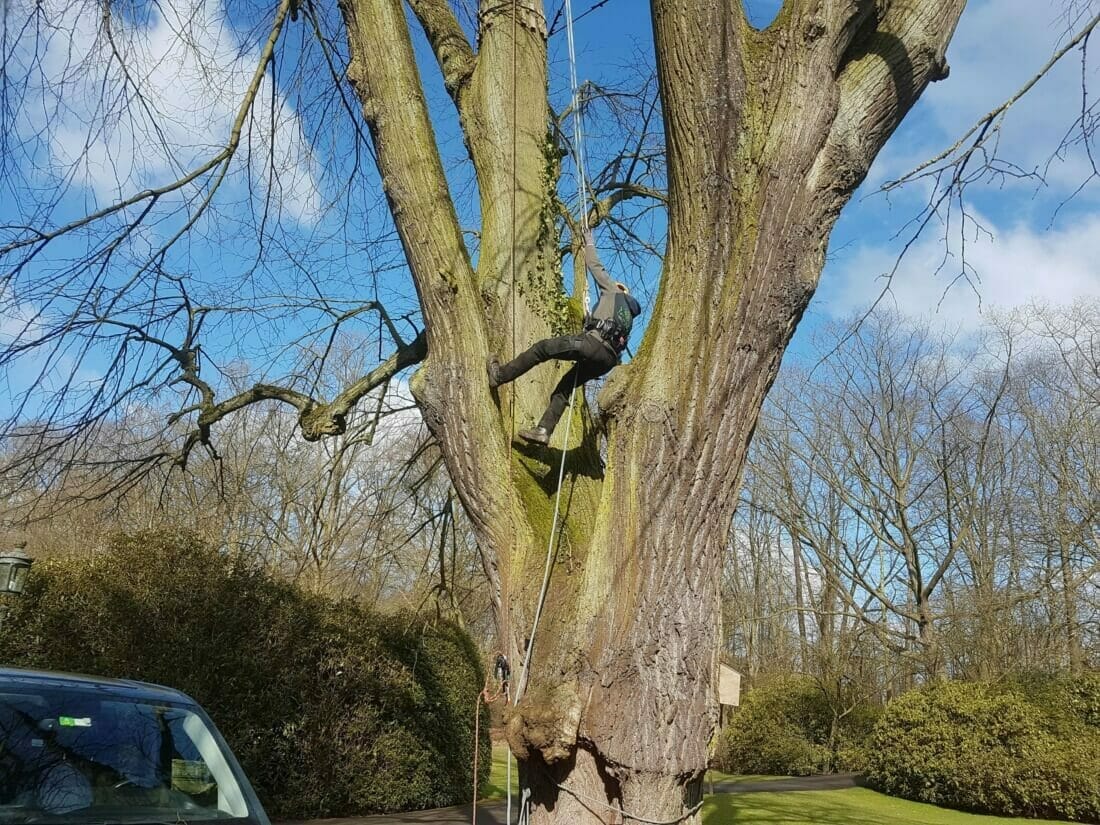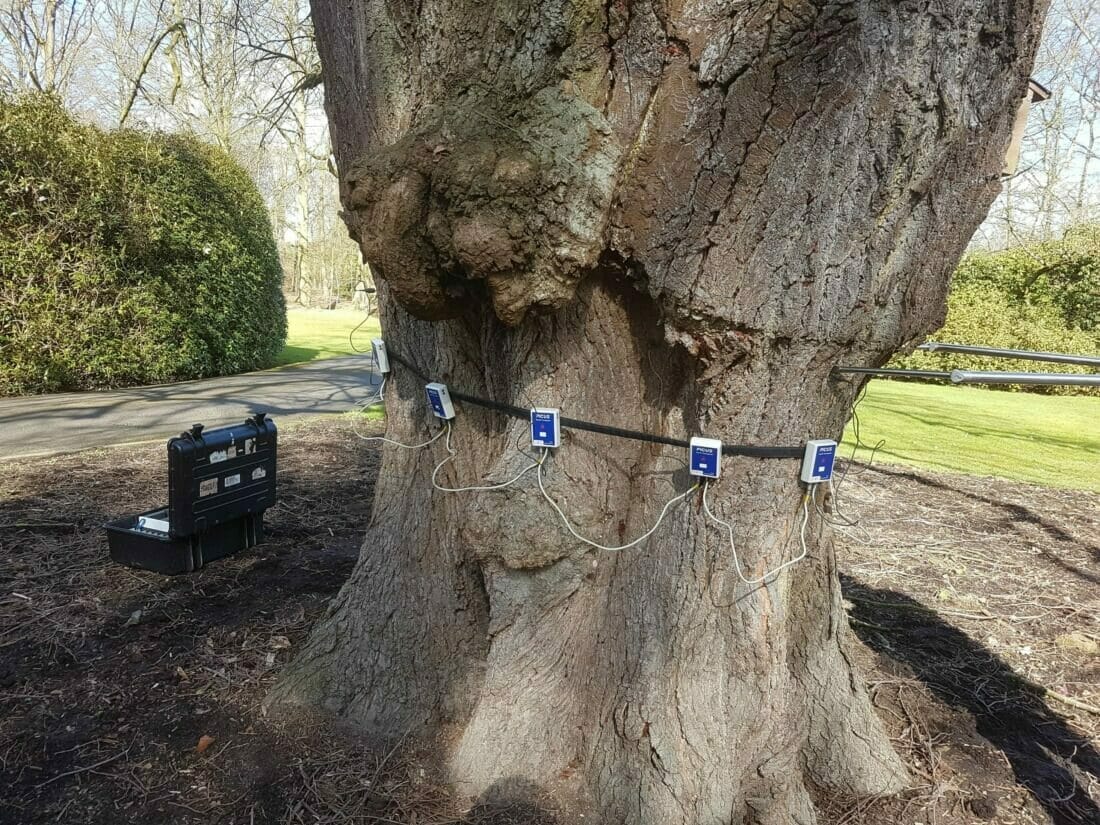


Tree safety check, individual tree or tree stock
A tree safety check gives you information about the condition and condition of a tree. So that you know whether the tree is still safe for its environment. We all love trees, especially safe trees.
This web page gives you information about what a tree safety check is, how we carry it out and what information you will find in a tree safety report.
What is a tree safety check?
A tree safety check, often abbreviated as BVC, is a process in which trees are visually and non-invasively evaluated for their condition, vitality, stability and safety.
The purpose of a tree safety check is to identify and assess potential risks and issues relating to trees in urban environments or other areas where people are present.
The tree safety check, often based on a VTA check and MTA check, are the first steps in both a Tree Effect Analysis, tree plan, tree protection plan like with tree management.
The information collected about the trees is the basis for making further decisions; In a tree with no future prospects, because it is very sick and will die anyway after a few years, you will no longer invest, but rather cut it down. The reverse is of course also true.
Naturally, you also want to identify future trees by means of a tree safety check. Because you are going to invest in trees for the future.
During a tree safety check we examine various aspects of the tree, such as:
Condition
How is the leaf development of the tree to ensure a healthy specimen of its kind? And there are signs of it disease, pests, fungi or other infestations present?
Structure
Is the tree in good physical condition, or are there signs of rot, cracks, voids or other structural problems in the tree? crown architecture as plaque shells and elbow branches? This can cause branches or other parts of the tree to mechanically fail.
Stability
Is the tree firmly anchored in the ground? Are there signs of root problems or changes in the soil that indicate a change in stability? Such as soil cracks or local soil elevations at the root ball.
Branches and crown
Are there dead or weak branches that could break and pose a danger to people or property?
Environmental factors
Is the tree affected by wind, humidity, nearby structures, or other factors that could affect safety?
Taking measures for identified problems
Based on this evaluation we can determine whether measures are necessary, such as:
- pruning dangerous branches,
- strengthening crown parts of the tree by installing crown anchors or cables,
- carrying out further research such as sound tomography or tensile testing,
- or even removing a diseased or unstable tree if it poses a real danger to the environment.
Tree safety checks are important to ensure that trees in public spaces, parks, gardens, along roads and in other areas remain safe for people and property.
A tree safety check helps minimize risks. These can be caused by falling branches or falling trees. And ensure a healthy and tree-safe environment.
Why have a tree safety check carried out?
The question of a tree safety check often arises when owners or managers are concerned about the safety of their trees.
For example, when one observes cavities or fruiting bodies of fungi on the tree. And cavities and fungi can indeed mechanically weaken trees.
And rightly so, because if an accident were to happen, they could be held liable for the damage who caused the accident.
But when the tree owner has a tree safety check, he has acted with due diligence. And the chance of unexpected things happening with the next storm becomes much smaller.
There are also other important reasons why you should carry out a tree safety check.
This is how you feed tree management on a large scale, such as when drawing up a tree plan, carries out a tree safety check on every tree. As well as when drafting one Tree Effect Analysis. Because this gives you an overview of which trees require the highest priority in connection with tree safety. And you know which trees you definitely want to invest in and which ones you certainly don't.
Which tree parameters do you check during a tree safety check?
During a tree safety check you always work non-destructively and non-invasively. It is a visual inspection where we can check the following parameters:
- page setting
- leaf color
- shoot length
- size of the fruits
- crown structure
- crown quality
- there is branch death
- cavities
- rotting
- mechanical damage
- heavy elbow branches
- heavy pistons
- cracks
- torsions
- root system
- strangler roots
- location
- wound overgrowth
- reaction wood
- ...
In addition, we can report various control measures at once, such as:
- pruning a tree (crown reduction, lighting, safety pruning, harvesting, guidance pruning, etc.),
- to cut down a tree,
- further investigation (picus sound tomography, tensile test, climbing inspection, drone inspection, ...),
- to be replaced (for example in young plantings or in a lane),
- ...
Depending on the assignment, several or just a few parameters are reported. Please note that this is always in consultation and based on the current situation tree management happens.
What tools do we use during a tree safety check?
During a tree safety check, you want to find out as much as possible and yet in a simple way about the condition of the tree. Small simple tools such as a prod, binoculars, measuring tape, wooden hammer, a sturdy knife and hand pruning shears can provide you with a lot of information.
The wooden hammer is very useful in detecting cavities in the trunk, trunk base, root formations and even the roots if they are large enough and partly above ground.
We use the stick to measure the depth of a rot. Or to determine whether a piece of exposed heartwood has not become rotten due to attack by a fungus. We also use the spike stick to measure the penetration resistance of the soil in the crown projection of the tree. This is not an exact measurement, but provides an initial indication of the soil conditions during the tree inspection.
If there is any doubt and we suspect a compacted soil, we use our penetrometer, which displays exact values.
By cutting a twig with a knife or pruning shears, the inside of the twig is visible. Its condition may affect us in some cases attacks and/or species also provide more information about the condition of the tree.
And to be able to properly observe whether there is any death on the outside of the crown or whether there are budding buds everywhere, binoculars come in handy.
The bottom line is, the more information you can determine in a simple way, the better you can make a judgment about the tree.
A book about MTA (Mycological Tree Assessment) with a lot of information about which fungus has which effect on which tree species is also one of our tools. tree manager.
Some example situations of a tree safety check
This inspection or tree safety check may then show that the tree has become very unstable, for example. Or is sensitive to wind throw, trunk breakage or branch breakage. Also other features of the tree, such as a heavy elbow branch or plaque sludge can cause problems or an unsafe situation in the long term. We store all this collected data in one report, together with the advice and mitigating measures. To take the right actions afterwards, also for follow-up in the following years.
It may also be that the life expectancy of a tree is still limited. For example, because of a fungal attack. Such as in the advanced state of a tinder fungus infestation, where the fruiting bodies are already fully developed and are several years old. Or as with the attack by a resin fungus or fire fungus. And when these fruiting bodies are fully grown and numerous on the tree, the wood inside the tree is completely colonized by the mycelium. As a result, no healthy wood remains. Which causes serious stability problems to arise. The You will then have to cut down the tree urgently for safety reasons.
The result of the check determines whether further investigation is necessary
Based on the non-destructive and visual inspection of trees by our tree expert it can be decided whether or not additional research is necessary. This is called further research. Further research may include a resistography, tensile test, leaf analysis, chlorophyll fluorescence analysis, soil analysis, acoustic tomography, climbing inspection or other research.
Picus sound tomography and tensile test of the same veteran tree (lime) as a tree safety check, because the MTA check found a saddle fungus (Polyporus squamosus), which makes the wood very brittle, in the cavity between the two trunk parts.
Increasing tree safety through regular inspection
When a tree is no longer healthy, and its life expectancy is therefore rather limited, but the owner or manager of the tree still wishes to keep it safely for as long as possible, follow-up on a regular basis is necessary.
Inspection by our tree expert every 6 months, annually or every 2, 3 or maximum 4 years. Provided that you take additional measures, such as anchoring, supporting, safety pruning or other.
This must always be considered and decided based on the current condition of the tree.
If a tree is sensitive to wind throw due to a severely damaged root or a large cavity in the trunk, monitoring will have to be done at very regular intervals. As the condition of the tree is too poor, can even be a emergency hood or emergency felling needed.
A visual tree inspection tells a lot about both the condition like the vitality of a tree. And it will certainly provide a definitive answer as to whether or not further research is needed.
If you would like to subject your trees to a tree safety check, please do not hesitate to contact us contact.

